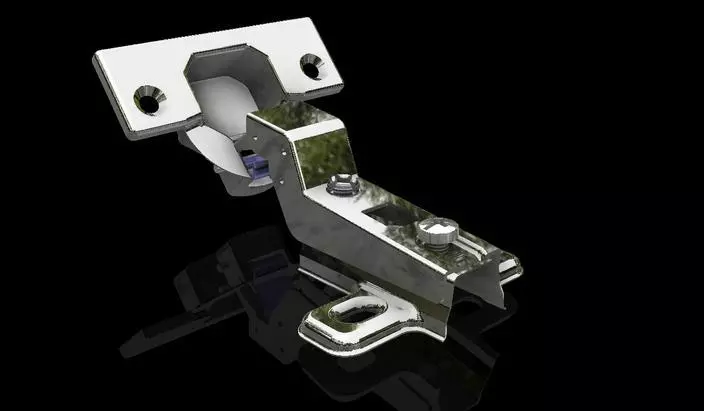Cabinet hinge design is generally classified into full-cover, half-cover and hide-inside, which might as well be called straight arm, medium-bend and large-bend, or straight bending, large bending and bending, etc., all of them change from place to place.
In the design and manufacturing process of cabinet, 18mm-thickness door plank is generally used in the majority, of course, there are a few use 15mm or 16mm, and full-cover-cabinet refers to those whose door plank closing just cover that side panel, when it is just 18 mm, so that the full-cover we normally cover say is 18 mm plate. And general drilling distance of door blank is 5mm when installing full-cover cabinet hinge.
Make it clear what full-cover is, half-cover and hide-inside is easier to understand. Half one means when the door plank close, it can only cover half of the side panel, which is about 9mm. we can see another's half side panel in front of the cabinet, while the full-cover one can't see the side panel.
Then comes to the hide-inside type, which refers to those that door plank is entirely hided inside the side panel. The side panel is exposed, and we can see it is at the same level with the plank.
Someone tends to express in this way: C=0, C=9, C=18, which is said full-cover, half-cover and hide-inside. We can clearly see from this expression that C=15 means the plank they use is 15mm thickness.
Someone may ask if they can use 15mm or 16mm as full-cover type. This is fine. What we should do is just adjusting the hole spacing. The borehole distance of 18mm-plank is 5mm, while that of 15mm or 16mm-plank can be changed to 3~5mm.
Therefore, we should choose cabinet hinges according to our own practical situations.
In the design and manufacturing process of cabinet, 18mm-thickness door plank is generally used in the majority, of course, there are a few use 15mm or 16mm, and full-cover-cabinet refers to those whose door plank closing just cover that side panel, when it is just 18 mm, so that the full-cover we normally cover say is 18 mm plate. And general drilling distance of door blank is 5mm when installing full-cover cabinet hinge.
Make it clear what full-cover is, half-cover and hide-inside is easier to understand. Half one means when the door plank close, it can only cover half of the side panel, which is about 9mm. we can see another's half side panel in front of the cabinet, while the full-cover one can't see the side panel.
Then comes to the hide-inside type, which refers to those that door plank is entirely hided inside the side panel. The side panel is exposed, and we can see it is at the same level with the plank.
Someone tends to express in this way: C=0, C=9, C=18, which is said full-cover, half-cover and hide-inside. We can clearly see from this expression that C=15 means the plank they use is 15mm thickness.
Someone may ask if they can use 15mm or 16mm as full-cover type. This is fine. What we should do is just adjusting the hole spacing. The borehole distance of 18mm-plank is 5mm, while that of 15mm or 16mm-plank can be changed to 3~5mm.
Therefore, we should choose cabinet hinges according to our own practical situations.


 Español
Español 中文
中文